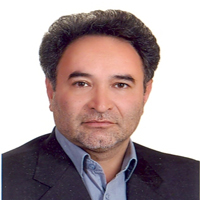Application of Stationary Wavelet Transform (SWT) to the Crack Detection in Concrete Arch Dams by Frequency Analysis
Author(s):
Abstract:
In this paper, crack detection possibility in an arch dam structure is investigated by wavelet transform analysis. An arch dam is a solid concrete dam, curved upstream in plan. In addition to resisting part of the pressure of the reservoir by its own weight, it obtains a large measure of stability by transmitting the remainder of the water pressure and other loads by arch action into the canyon walls. The complete necessity of high safety, economical design, complex of designing and its application increase the importance of concrete arch dams. Successful arch action is dependent on a unified monolithic structure, and special care must be taken in the construction of an arch dam to ensure that no structural discontinuities such as open joints or cracks exist at the time the structure assumes its water load. According to the principles of theory of structures, there is a relationship between the dynamic and static responses and, consequently, the stiffness. Any sudden change in stiffness leads to dynamic and static response variation. This condition will help to estimate the damage and to investigate the structural response before and after the failure. Wavelet analysis has recently been considered for damage detection and structural health monitoring (SHM). It provides a powerful tool to characterize local features of a signal. The basis function in wavelet analysis is defined by two parameters: scale and translation. This property leads to a multi-resolution representation for stationary signals. It has high ability in analysis of static and dynamic response signals. Staionary wavelet transform (SWT) can show the location of frequency changes. That these locations are the points that they have been damaged. The case study is the concrete curvature arch of KAROON-1 (Shahid Abbaspour) dam with the height of 200 m. This dam is considered as one of the most complex dams because of different external and internal radia and angles, as well as asymmetrical center of the external and internal archs in different levels. Using the geometrical dimensions of the above-mentioned dam- from respective design sheetsand its mechanical and physical properties, the dam with and without crack was modeled by the ABAQUS FE software package. After frequency analysis of the dam by ABAQUS for both safe and cracked models in the same frequency mode, displacement responses at the cracked level (crest) were extracted along the reservoir’s longitudinal axis. Afterwards, the responses were used for the wavelet analysis by the wavelet toolbar of the MATLAB software and the detection of crack in the dam structure was investigated with SWT. The results of wavelet analysis showed that the graphs have considerable rise at or around the crack location. But there was no noise or any harmony in the graphs of the safe dam. Hence, detecting the location of crack in dam structures is possible with wavelet transform.
Language:
Persian
Published:
Quranic Knowledge Research, Volume:11 Issue: 3, 2011
Page:
27
magiran.com/p930482
دانلود و مطالعه متن این مقاله با یکی از روشهای زیر امکان پذیر است:
اشتراک شخصی
با عضویت و پرداخت آنلاین حق اشتراک یکساله به مبلغ 1,390,000ريال میتوانید 70 عنوان مطلب دانلود کنید!
اشتراک سازمانی
به کتابخانه دانشگاه یا محل کار خود پیشنهاد کنید تا اشتراک سازمانی این پایگاه را برای دسترسی نامحدود همه کاربران به متن مطالب تهیه نمایند!
توجه!
- حق عضویت دریافتی صرف حمایت از نشریات عضو و نگهداری، تکمیل و توسعه مگیران میشود.
- پرداخت حق اشتراک و دانلود مقالات اجازه بازنشر آن در سایر رسانههای چاپی و دیجیتال را به کاربر نمیدهد.
In order to view content subscription is required
Personal subscription
Subscribe magiran.com for 70 € euros via PayPal and download 70 articles during a year.
Organization subscription
Please contact us to subscribe your university or library for unlimited access!


